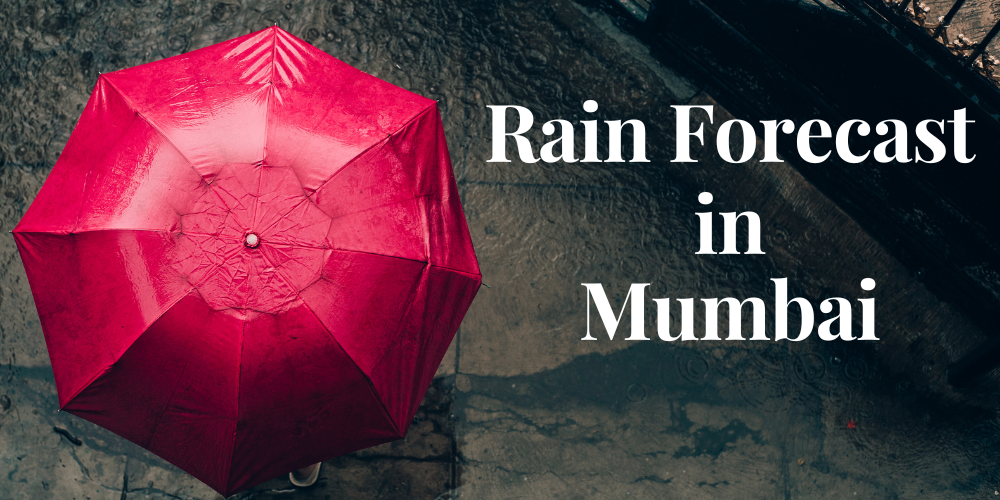
The annual arrival of the mumbai rain is a deeply significant event, a complex phenomenon that is both the city’s lifeline and its greatest seasonal challenge. For four months, the monsoon paints the sprawling metropolis in vibrant shades of green, replenishing vital water sources and offering a dramatic, welcome respite from the oppressive summer heat. Yet, this same season tests the limits of the city’s infrastructure and the remarkable resilience of its millions of inhabitants. It’s a period of profound contrasts, where moments of breathtaking beauty are often juxtaposed with the hardships of waterlogging and widespread disruption.
To truly navigate this dynamic period, a thorough understanding of the Mumbai monsoon is essential, from interpreting the latest forecast for rain in mumbai to appreciating its extensive impact on every facet of urban life. This guide offers a deep dive into the science, history, and daily reality of the monsoon, providing crucial insights based on information from official bodies like the India Meteorological Department (IMD) and the Brihanmumbai Municipal Corporation (BMC) to help you understand what to expect and how to safely manage this unique and powerful time of year. Planning a trip? Compare and book Hotel with Agoda or book direct with Hotels.com, Booking.com, Expedia.The Pulse of the City: Understanding the Mumbai Monsoon
When Does the Monsoon Arrive and Depart?
The official onset date for the monsoon in Mumbai is June 11th, with the typical withdrawal date being October 8th. However, these dates are benchmarks, and the actual arrival and departure can vary. In some years, the onset has been as late as June 25th, while in others, the withdrawal has stretched to the end of October, as seen in 2020, which marked one of the most delayed withdrawals since 1975. These variations are often influenced by larger climatic phenomena like the El Niño-Southern Oscillation (ENSO) and the formation of cyclones in the Arabian Sea, which can alter wind patterns and delay the monsoon’s advance. Historically, the mean onset date has been around June 10th, with the earliest recorded arrivals being as early as May 23rd.A City of Contrasting Rainfall
Rainfall across Mumbai is rarely uniform. A key characteristic of the monsoon is the significant disparity in precipitation between different parts of the city. The suburban areas, with weather patterns recorded by the Santacruz observatory, consistently receive more rainfall than the island city, monitored by the Colaba observatory. This is partly due to the urban heat island effect, where increased urbanization and concrete surfaces alter local weather, and the city’s complex topography. It is common for one area to experience intense downpours leading to localized flooding, while another part of the city sees only light showers. For example, on a given day, the rainfall recorded at Santacruz can be several times higher than that at Colaba, highlighting the need for localized, area-specific forecasts rather than a single city-wide prediction.The Latest Mumbai Rain Forecast: What to Expect
Decoding IMD Alerts
The IMD uses a color-coded warning system to communicate the expected severity of weather events, which is crucial for public preparedness. Understanding these alerts is key: Green Alert: Indicates “No Warning.” Weather conditions are normal, and no advisory is needed. Yellow Alert: Means “Be Aware.” It signals the possibility of moderately heavy rainfall and advises residents to stay updated as it could cause minor disruptions like traffic congestion or waterlogging in low-lying areas. Orange Alert: A “Be Prepared” warning. This indicates a forecast of heavy to very heavy rainfall. It signals a high likelihood of disruptions to transport, power supply, and potential waterlogging. Authorities may advise against non-essential travel. Red Alert: The highest level, meaning “Take Action.” A red alert is issued for extremely heavy rainfall (typically over 204.5 mm in 24 hours) that poses a significant threat to life and property. It often leads to widespread flooding, suspension of public transport, and the mobilization of disaster response teams.Reliable Sources for Real-Time Updates
In addition to the IMD, several other resources provide real-time information. The BMC’s Disaster Management Cell is a vital resource, coordinating emergency responses and disseminating information. For commuters, following updates from railway authorities and traffic police on social media can provide crucial information on service status and road conditions. Many residents also rely on a variety of trusted weather websites and mobile applications for live radar maps and hourly predictions to navigate the city effectively.The Impact of Heavy Rain on Mumbai's Lifeline
Waterlogging: A Perennial Problem
Waterlogging is a chronic issue during the monsoon, with many low-lying areas like Sion, Andheri, and Hindmata becoming inundated after just a few hours of heavy rain. The primary causes are multifaceted: Outdated Drainage System: Much of Mumbai’s stormwater drainage network was built during the British era and was designed to handle a much lower rainfall intensity of about 25 mm per hour. Today’s intense rainfall events frequently exceed this capacity. Geography and High Tides: A significant portion of Mumbai is built on reclaimed land, with some areas lying below the high-tide level. During high tides, the sea prevents rainwater from draining out, causing it to flow back into the city’s streets, especially when heavy rain coincides with a high tide. Urbanization and Blockages: Rapid, often unplanned, construction has concretized surfaces, reducing the ground’s ability to absorb water. Furthermore, the rampant disposal of plastic and other solid waste clogs drains and chokes natural water channels like the Mithi River, severely impeding the flow of water.Disruptions to Public Transport
Mumbai’s public transport system, the lifeline for its workforce, is highly vulnerable to the monsoon. Local Trains: The suburban railway network, which carries millions of commuters daily, often faces delays or complete suspension. Waterlogging on tracks at critical, low-lying sections like Kurla, Sion, and Chunabhatti forces services on the Central, Western, and Harbour lines to a halt. Road Transport: Heavy rains lead to massive traffic jams on arterial roads like the Western and Eastern Express Highways. Waterlogging forces the closure of crucial underpasses, such as the one in Andheri, severing key east-west connections. The rain also exacerbates the problem of potholes, making road travel slow and hazardous. Air Travel: Operations at Chhatrapati Shivaji Maharaj International Airport are also affected. Heavy rain and low visibility can lead to flight delays, diversions, and cancellations, with airlines frequently issuing advisories for passengers to allow for extra travel time to the airport.A History of Deluges: Learning from Past Events
The 2005 Floods: A Wake-Up Call
The date July 26, 2005, is seared into the collective memory of Mumbai. On this day, the city was paralyzed by an unprecedented deluge, with some areas receiving 944 mm of rainfall in a 24-hour period. The event led to a catastrophic breakdown of all infrastructure, causing widespread devastation and tragic loss of life. The 2005 floods exposed the severe limitations of the city’s aging drainage system and acted as a major catalyst for change. In its aftermath, the long-pending Brihanmumbai Stormwater Disposal System (BRIMSTOWAD) project was revived and fast-tracked to upgrade the city’s drainage capacity.The 2017 Floods and Subsequent Events
Mumbai faced another major flood on August 29, 2017, when intense rainfall once again brought the city to a standstill, submerging large areas and crippling the transport network. This and other subsequent heavy rainfall events have reinforced the understanding that extreme weather is becoming more frequent. Climate experts suggest that global warming is contributing to more intense, short-duration rainfall, moving away from evenly spread-out monsoon patterns, further straining the city’s infrastructure.Lessons Learned and Systemic Changes
In response to these devastating floods, significant efforts have been made to improve Mumbai’s resilience. The BRIMSTOWAD project has been a cornerstone of this effort, involving the widening of major rivers like the Mithi, augmenting old drainage lines, and constructing new pumping stations at chronic waterlogging spots. These pumping stations are designed to actively pump out floodwater into the sea, especially during high tides when natural drainage is impossible. While the project has faced delays and cost escalations, its phased implementation has shown positive results in several areas.Staying Safe and Healthy During the Mumbai Monsoon
Health and Hygiene
The monsoon season is a breeding period for various pathogens, leading to a spike in specific illnesses. It’s essential to be vigilant about: Water-Borne Diseases: Gastroenteritis and typhoid are common due to potential water contamination. Always drink boiled, filtered, or bottled water. Avoid street food, especially items that may be prepared with unhygienic water. Mosquito-Borne Diseases: Stagnant water creates breeding grounds for mosquitoes, increasing the risk of dengue and malaria. Ensure there is no standing water in or around your home—in flower pots, air cooler trays, or discarded containers. Using mosquito repellents and nets is highly recommended. Leptospirosis: This bacterial infection spreads through contact with water contaminated by animal urine. It is critical to avoid wading through flooded water. If unavoidable, wear waterproof footwear and thoroughly wash your feet and legs with soap and water immediately after.Safety Precautions During Heavy Rain
When the IMD issues an orange or red alert, it is best to exercise extreme caution. Here are some key safety tips: Avoid unnecessary travel. Stay indoors if possible. Be extremely cautious of open manholes, which can be hidden by floodwaters. Citizens are encouraged to report open manholes to the BMC’s helpline (1916). Stay away from electrical poles, transformers, and fallen wires to prevent the risk of electrocution. If driving, avoid waterlogged underpasses and submerged roads. A stalled vehicle in floodwater can be extremely dangerous. Keep an emergency kit ready with a first-aid box, torch, power bank, essential medicines, and non-perishable food items.The Civic Body's Role: Preparedness and Mitigation
Pre-Monsoon Preparations
Months before the monsoon’s arrival, the BMC focuses on several key areas: Desilting Drains: A major focus is the cleaning and desilting of the city’s network of major and minor nullahs (drains) to ensure an unobstructed flow of rainwater. Pruning Trees: The garden department prunes weak or overgrown trees across the city and in private properties to prevent them from falling during strong winds and heavy rain. Road Repairs: Pothole repair work is undertaken on major roads to ensure smoother traffic flow. Deploying Pumps: The BMC identifies hundreds of chronic waterlogging spots and deploys dewatering pumps, which are now geo-tagged for better monitoring and accountability.Disaster Management and Response
The BMC’s Disaster Management Cell acts as the nerve center for all monsoon-related emergencies. It operates a state-of-the-art control room that monitors weather conditions and coordinates with all emergency support functions, including the police, fire brigade, and the National Disaster Response Force (NDRF). The city has a well-defined disaster plan that is activated during red alerts, with dedicated teams ready for search and rescue, providing medical aid, and setting up temporary shelters. The BMC also uses its social media channels and a dedicated app to send out timely alerts and information to citizens.Conclusion
Frequently Asked Questions (FAQ)
What is the best time to visit Mumbai to experience the monsoon?
The monsoon season in Mumbai is from June to September. If you want to experience the dramatic rains, this is the time to visit. However, be prepared for extremely heavy rainfall, especially in July and August, which can lead to significant travel disruptions and waterlogging. For a milder experience, late June or September might be preferable.How can I stay updated on the latest Mumbai rain forecast?
The most official source is the India Meteorological Department (IMD) website for Mumbai. Additionally, you can follow the official social media handles of the BMC and Mumbai Traffic Police for real-time alerts on waterlogging and transport disruptions. Numerous reliable weather apps also provide live updates.What are some of the most common problems during the Mumbai monsoon?
The most common problems are severe waterlogging in low-lying areas, massive traffic jams, and major disruptions to local train services. There is also an increased risk of health issues like malaria, dengue, and leptospirosis, and infrastructure challenges like potholes and tree falls.What safety precautions should I take during heavy rain in Mumbai?
During heavy rain (especially Orange or Red alerts), it is best to stay indoors. If you must travel, avoid flooded streets, be wary of open manholes, and stay clear of electrical installations. Do not walk through floodwaters to avoid infections like leptospirosis. Keep an emergency kit and important contacts handy.What is the BMC doing to address the problem of flooding in Mumbai?
The BMC undertakes extensive pre-monsoon work, including cleaning drains, pruning trees, and repairing roads. A major long-term initiative is the BRIMSTOWAD project, aimed at upgrading the entire stormwater drainage system by widening rivers and drains and installing powerful pumping stations to actively remove floodwater during high tides.
Binu Lamba
Binu Lamba is a 29-year-old editor and fact-checker with 7 years of experience in travel content. He verifies all location details, hotel recommendations, and travel tips to ensure our guides are accurate, updated, and helpful for readers planning real trips.

AI Assistant
Our AI writing assistant supports the creation of travel content under strict human supervision. All AI-generated posts are thoroughly reviewed, fact-checked, and updated by our team to maintain trust and accuracy in our travel recommendations.

Places to Visit in Mumbai: Your Complete Guide
Mumbai, the bustling financial capital of India, is a city that never sleeps. Known for its vibrant culture, stunning landmarks, and scenic coastal views, it

Discover the Best Hotels in Mumbai for an Unforgettable Stay
Finding the best hotels in Mumbai is easy once you know where to look. Whether you’re visiting for business, leisure, or a mix of both,

“Best Cafes in Mumbai You Shouldn’t Miss”
Mumbai’s energy is electric. It’s a city that never truly sleeps, and fueling this constant buzz is a vibrant and ever-evolving cafe culture. From historic








